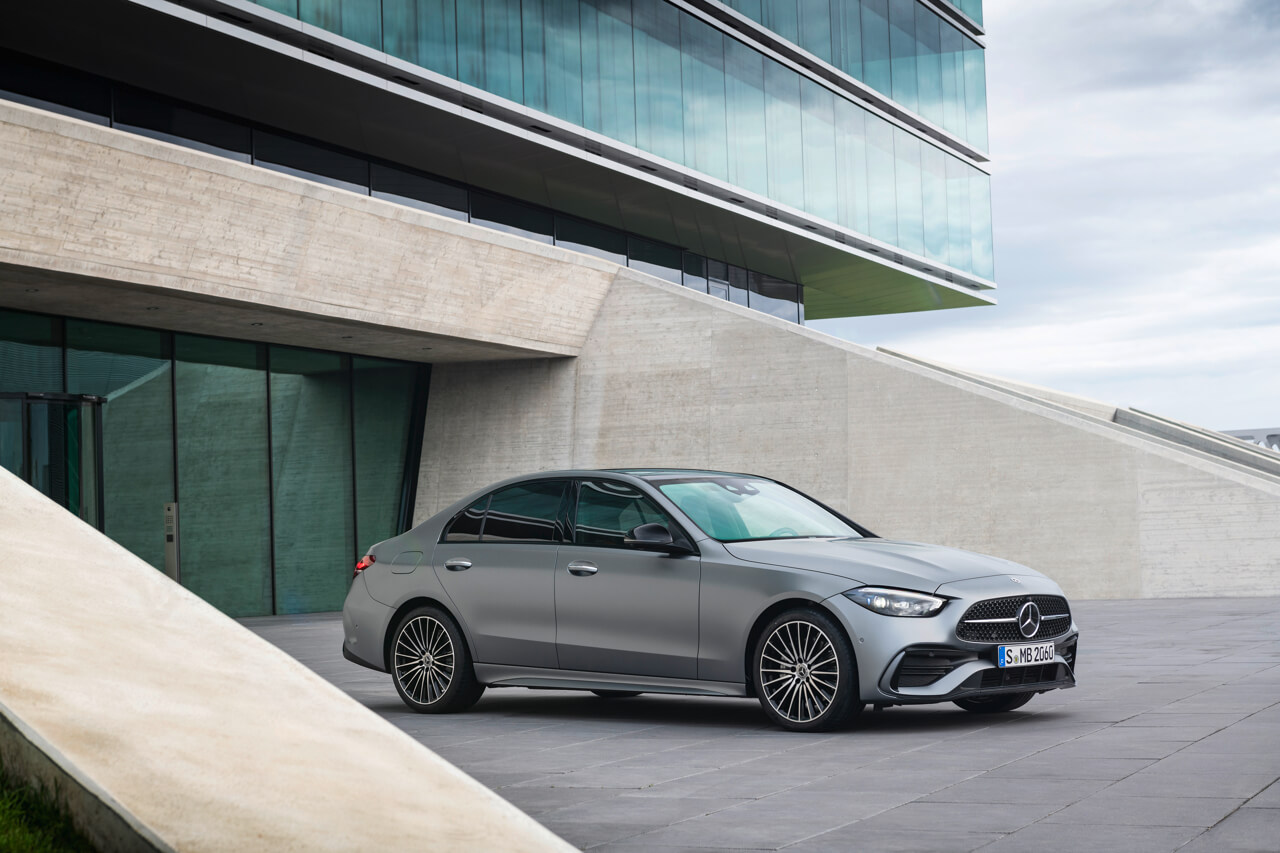Mercedes-Benz has announced the release of an all-new 5th generation Mercedes-Benz C-class, via digital launch. The new W206 model debuted internationally during the wee hours of the morning in New Zealand on 24 February – at 2am, to be exact.
Anyhow, any new C-class is going to be a significant deal for Mercedes-Benz, with over 10.5 million C-class vehicles being sold since 1982. Today, 1-of-7 cars sold by Mercedes globally are a member of the C-class family.
According to Mercedes, their objective with the new C-class range was to develop a car with “human-centred innovations with a sporty and modern design”. In a practical sense, the new C-class gains many of the innovations and design cues which first debuted on the Mercedes-Benz S-class.
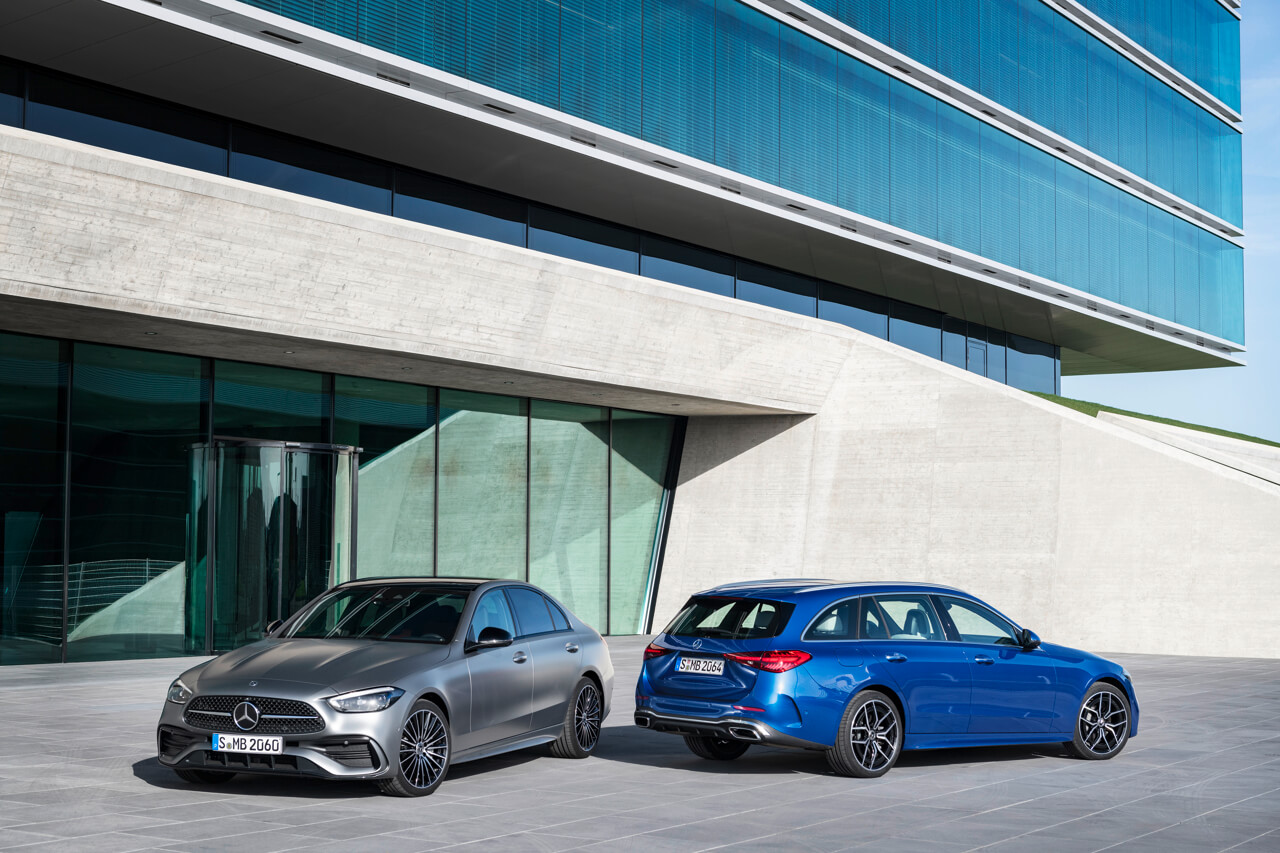
Exterior
The exterior changes to the new C-class appear minor on the surface. The front and the rear have been brought up-to-date with the current Mercedes design language. The new front-end has more angular features, including new headlights, plus a wider grille with extra intakes and plastic fascias.
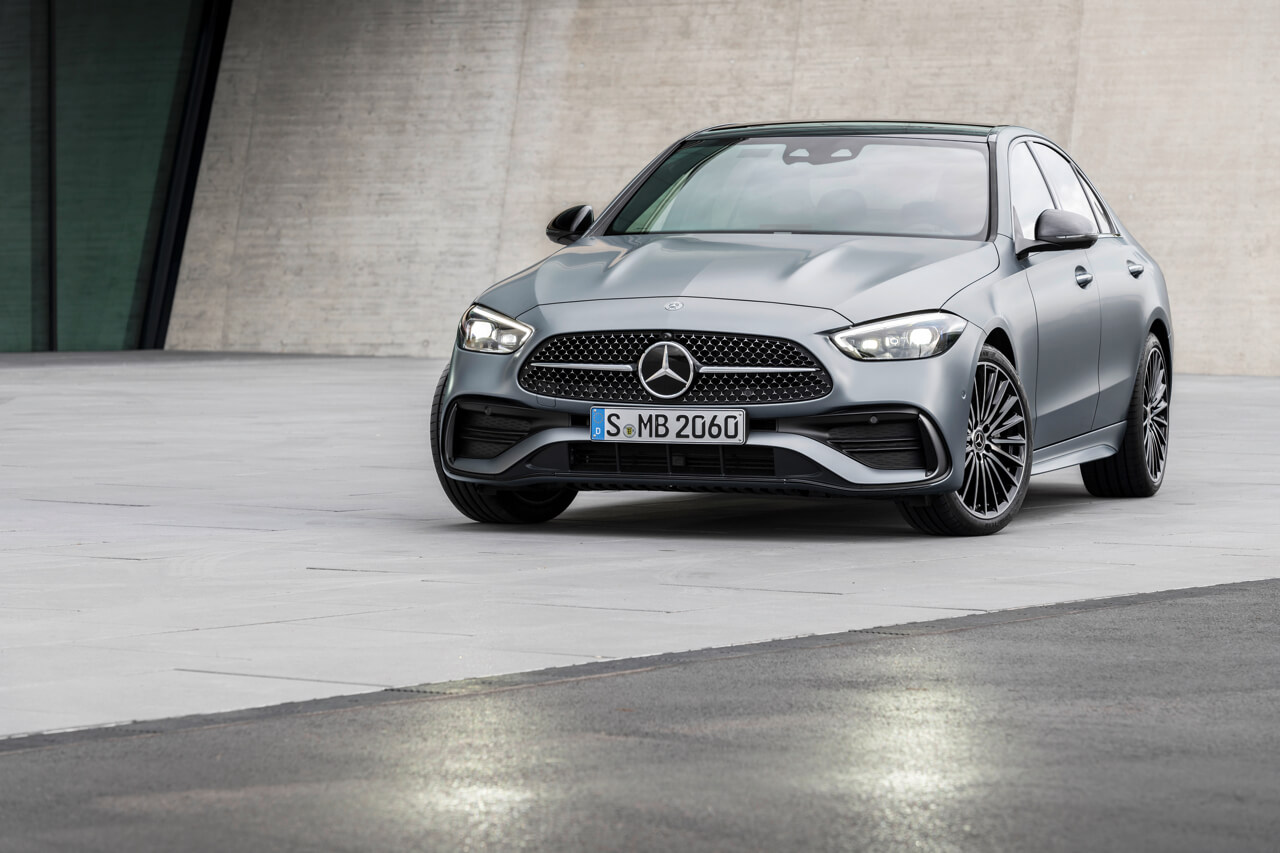
The rear lights have been upgraded, featuring a sharp triangular profile over the circular lights of the outgoing models.
There’s also a new range of alloy wheels, ranging from 17-inch to 19-inch options.

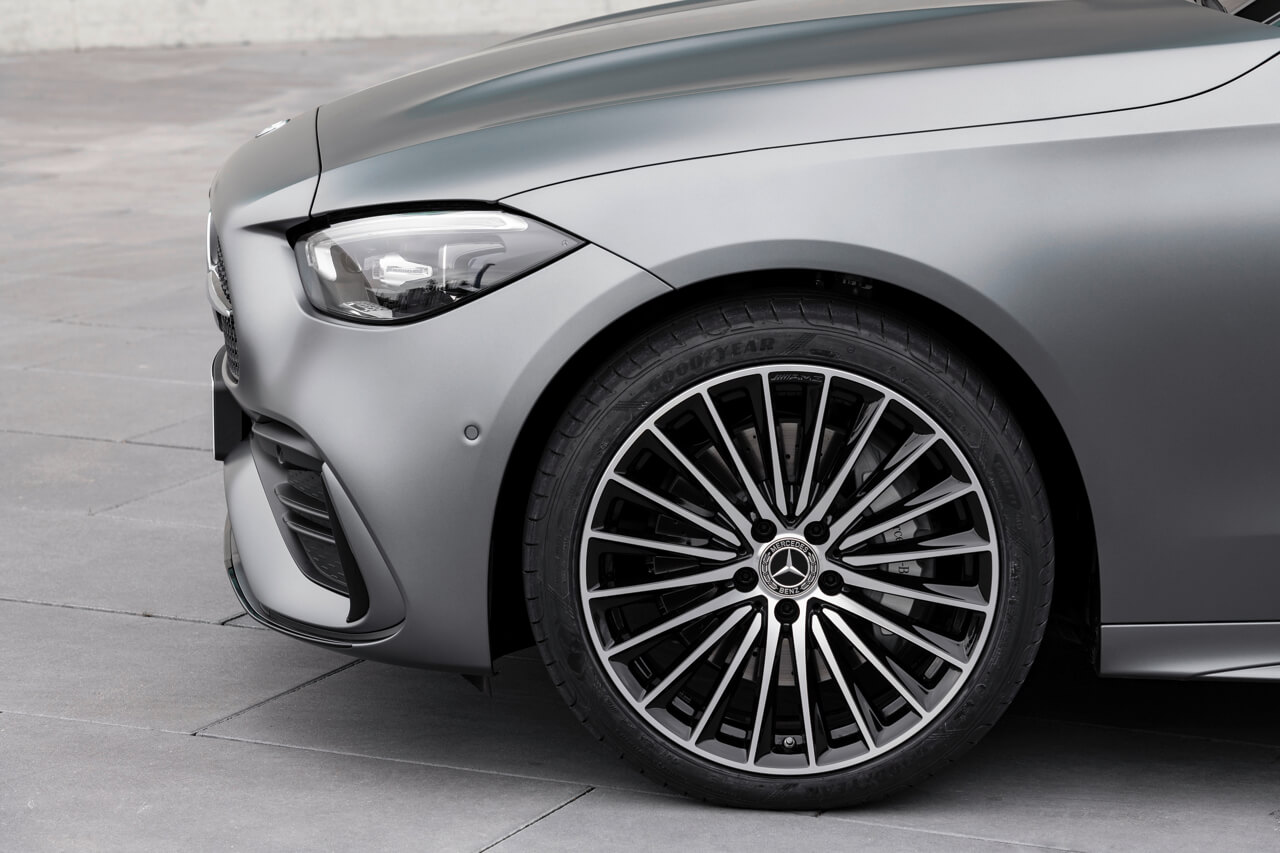
Interior
Despite the conservative changes outside, the majority of the changes have occurred inside the cabin. The interior utilises the design layout that we first saw inside the new S-class Mercedes.
The obvious change begins with a new dashboard and the reshuffle of the screens. Where we’d become used to two adjoined screens for infotainment and instruments in other Mercedes models, the C-class segregates them off again.
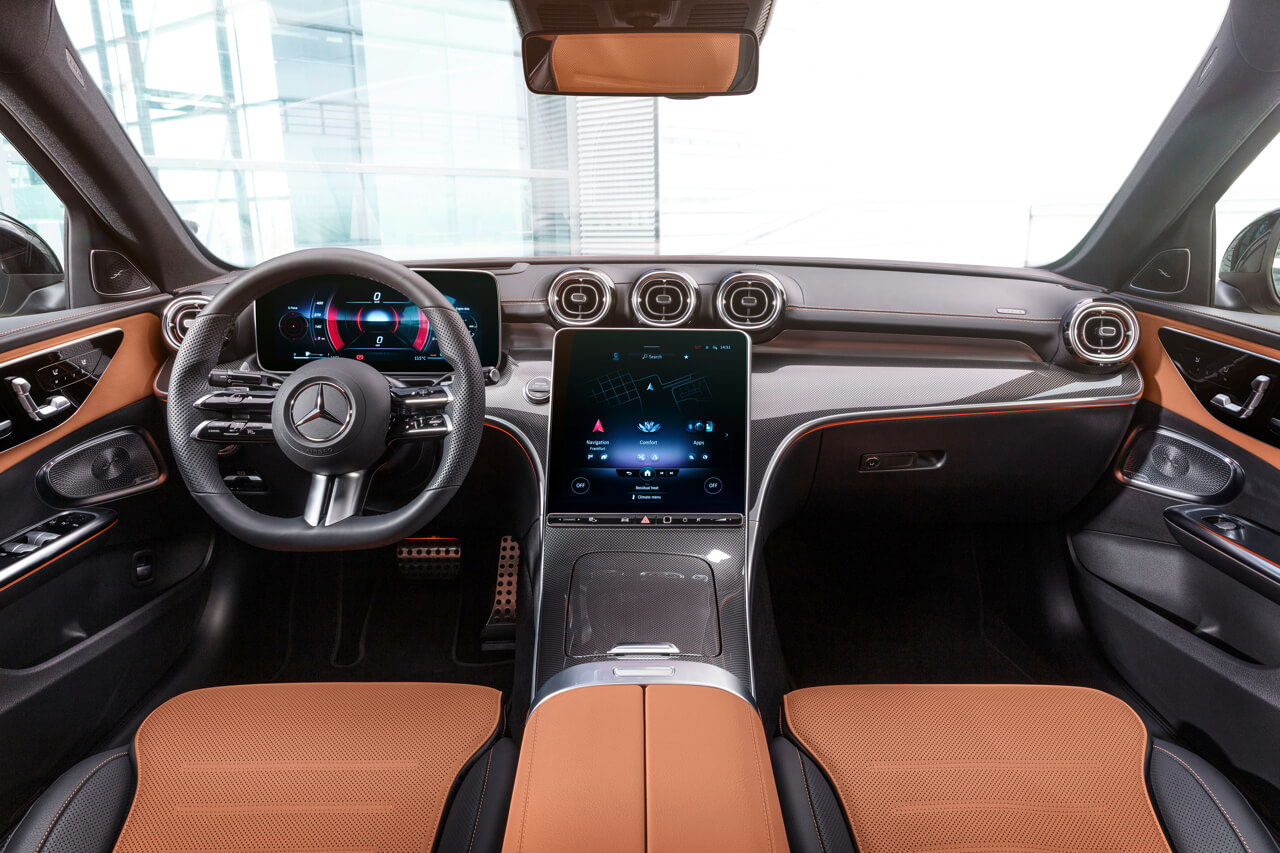
For the instrument screen, customers have a choice between a 10-inch or a 12-inch in higher trim levels. A portrait shaped, 9.5-inch centre infotainment screen comes standard, while a larger 12-inch version is optional. The infotainment runs the latest MBUX software, which ditches the old rotary style sector. Many of the accessory functions are integrated onto the screen, evidenced by a general absence of interior buttons in the centre of the car.
You will spy a small row of buttons below the touch screen, where Mercedes has integrated a fingerprint scanner for driver recognition and in-car security.
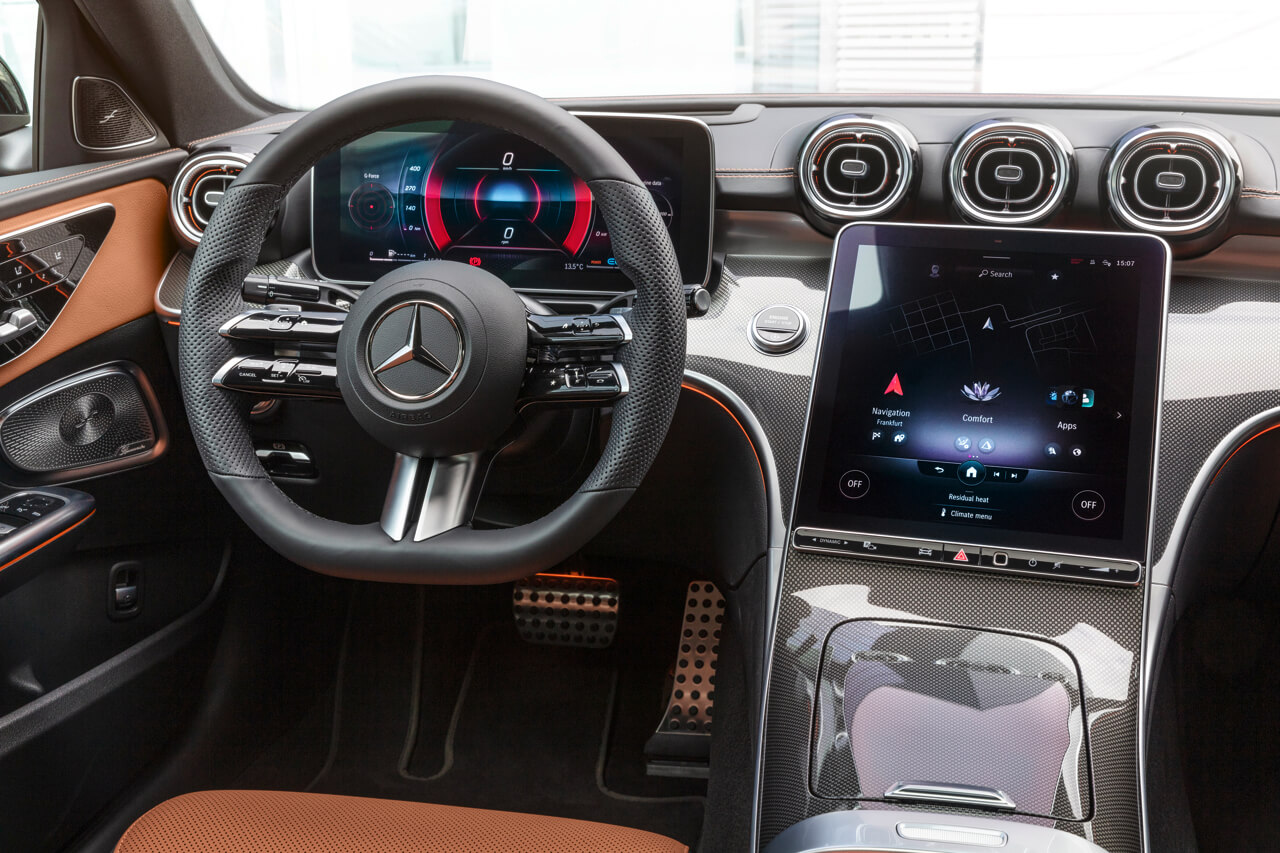
Being a Mercedes, the quality of the materials is expected to be excellent. There’s a newly designed steering wheel with haptic touch controls, there’s freshly-designed turbine air vents, and all the disco-room lighting (ambient lighting) we’ve come to expect from Mercedes.
In the back, there’s 20mm more legroom and 15mm of head room for passengers. The saloon’s boot is 455L, while the C-class wagon’s cargo has grown 30L, offering 490L litres seats up, 1510L seats down.

Engines
The C-class range is powered by a newly developed turbocharged four-cylinder engine, known as the M 254 engine. That right, V6 engines are no longer available.
The engine is configured as either 1.5-litre or a 2-litre, each with a different tune. The base model, the C180, with its 1.5-litre engine produces 125kW of power and 250Nm of torque. The top-spec C300 produces 190kW of power and 400Nm of torque from its 2-litre engine. All engines come with mild-hybrid technology, which is good for an additional output of 15 kW.
On the subject of additional output, Mercedes has called in support from the Mercedes-AMG F1 team to help them develop the new turbocharger for the M 254 range. The new turbocharger allows for an additional output of up to 20 kW on overboost.
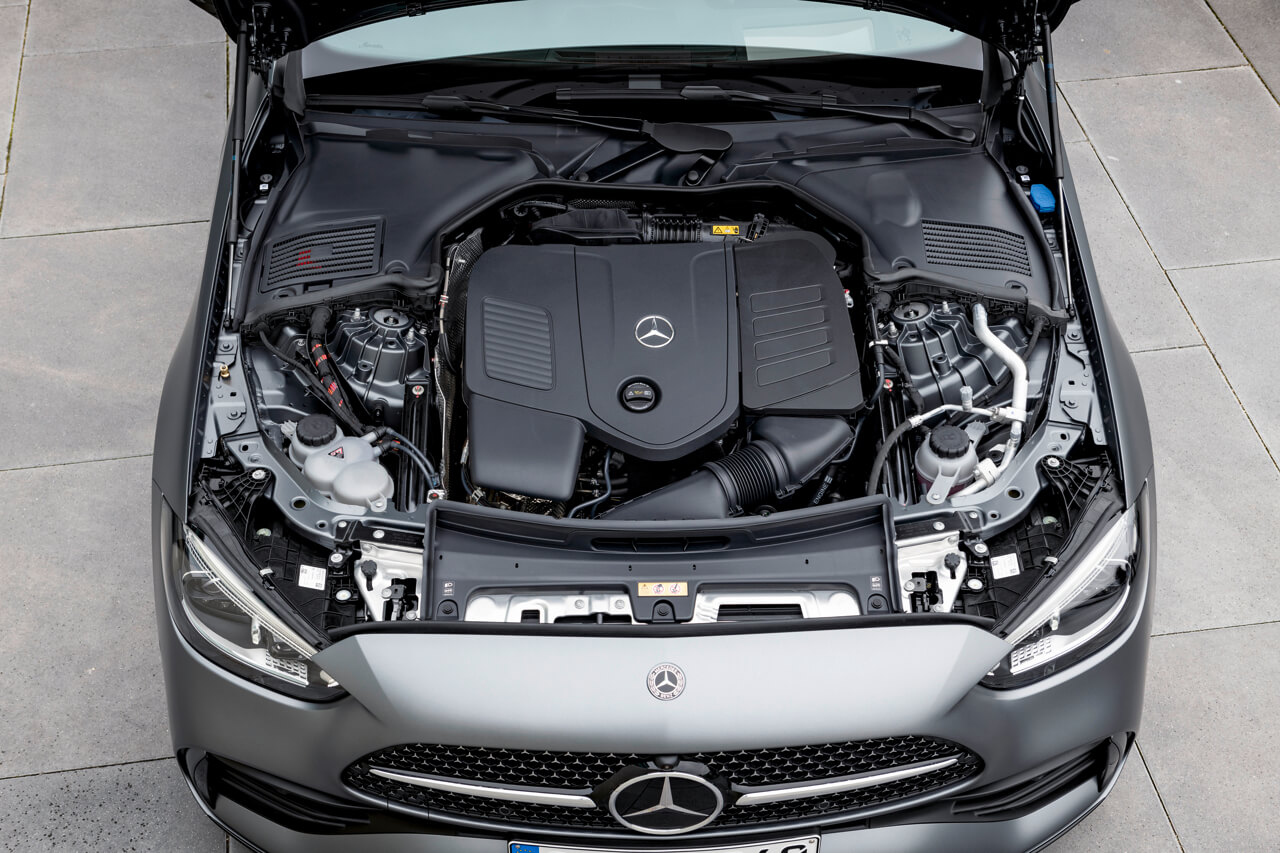
All models are paired with an updated version of Mercedes own 9-speed automatic gearbox.
Plug-in Hybrid (PHEV) variants of the C-class are due to arrive shortly after the launch. The PHEV variants feature an in-house developed 25.4 kWh battery, which provides the C-class with an all-electric range of around 100 kilometres. The electric motor produces an additional 95 kW (129 hp) of power to support the output of the combustion engine. The battery can be fully charged in 30 minutes via DC charging.

The engine powering the newest C63 AMG has not been announced, but it is speculated that it will also be a turbocharged 4-cylinder, similar to that found in the current A45 AMG. I know, we’re disappointed about the demise of the V8 too.
In terms of suspension, the C-class has four-link suspension in the front and a fresh multi-link setup in the rear. Adaptive dampers are optional, while the plug-in hybrid models get rear air suspension as standard.
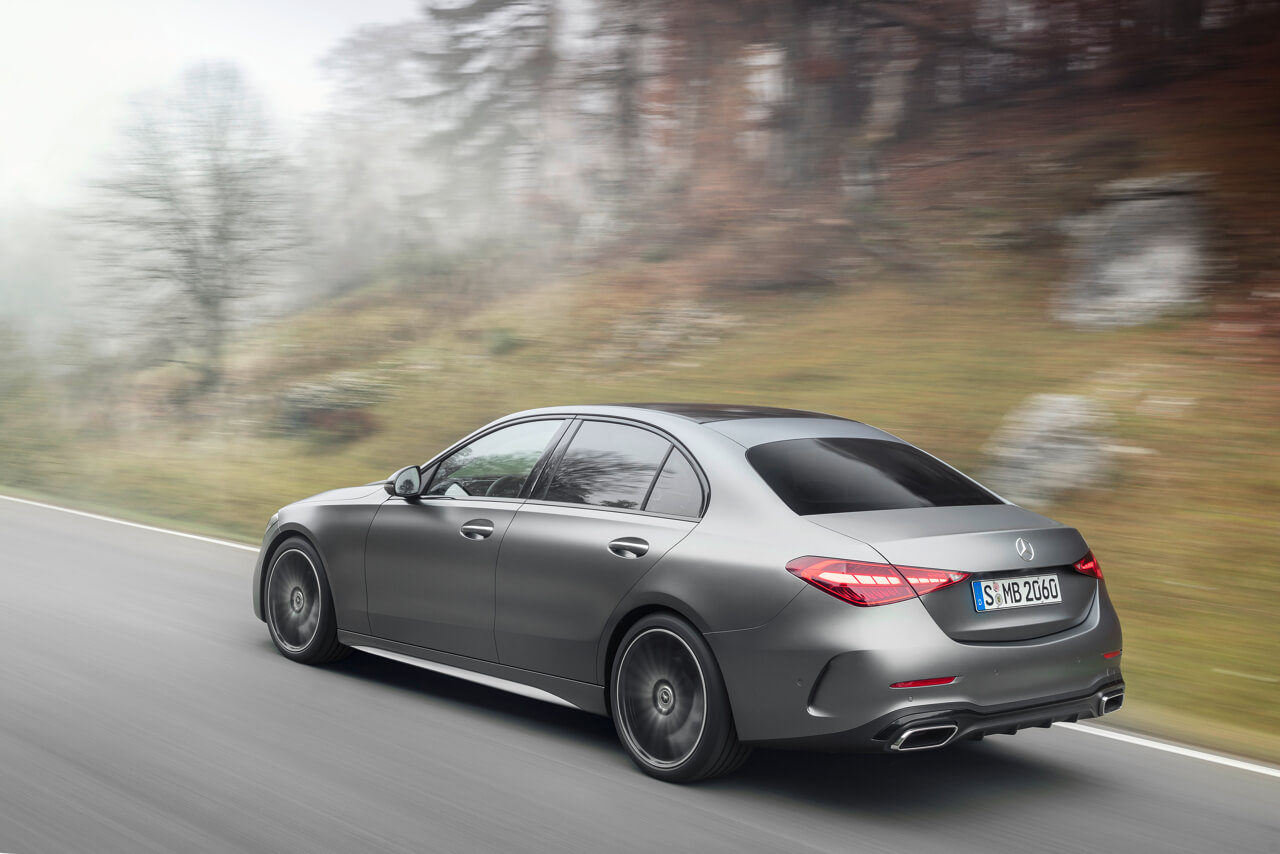
Technology
Of course, it wouldn’t be a Mercedes without it having some bleeding-edge tech on-board.
The C-Class’ MBUX system includes features like augmented reality navigation and Mercedes “Online Music” service, which integrates the major streaming services to the vehicle. The system is hooked-up to a Bang and Olufsen sound system, which is standard across all models. The infotainment also allows “over-the-air” updates, to keep the software up to date and allow drivers to pay for different apps and services.
Heck, the MBUX system can even be used to order food – but this is only for Chinese customers at this stage. Perhaps they’ve earned it – China has been the largest market for C-class saloons since 2016.
The C-class is also available with the optional Digital Light system, which projects guidelines and warning symbols on the road ahead. It also offers dazzle-free illumination for oncoming traffic.

The new C-class range debuts in Europe at the end of March. Release dates for the New Zealand and Australian markets should arrive shortly afterwards. If you’re after the new AMG, you’ll need to hang-out until 2022.
DriveLife looks forward to testing out the new C-class range.
